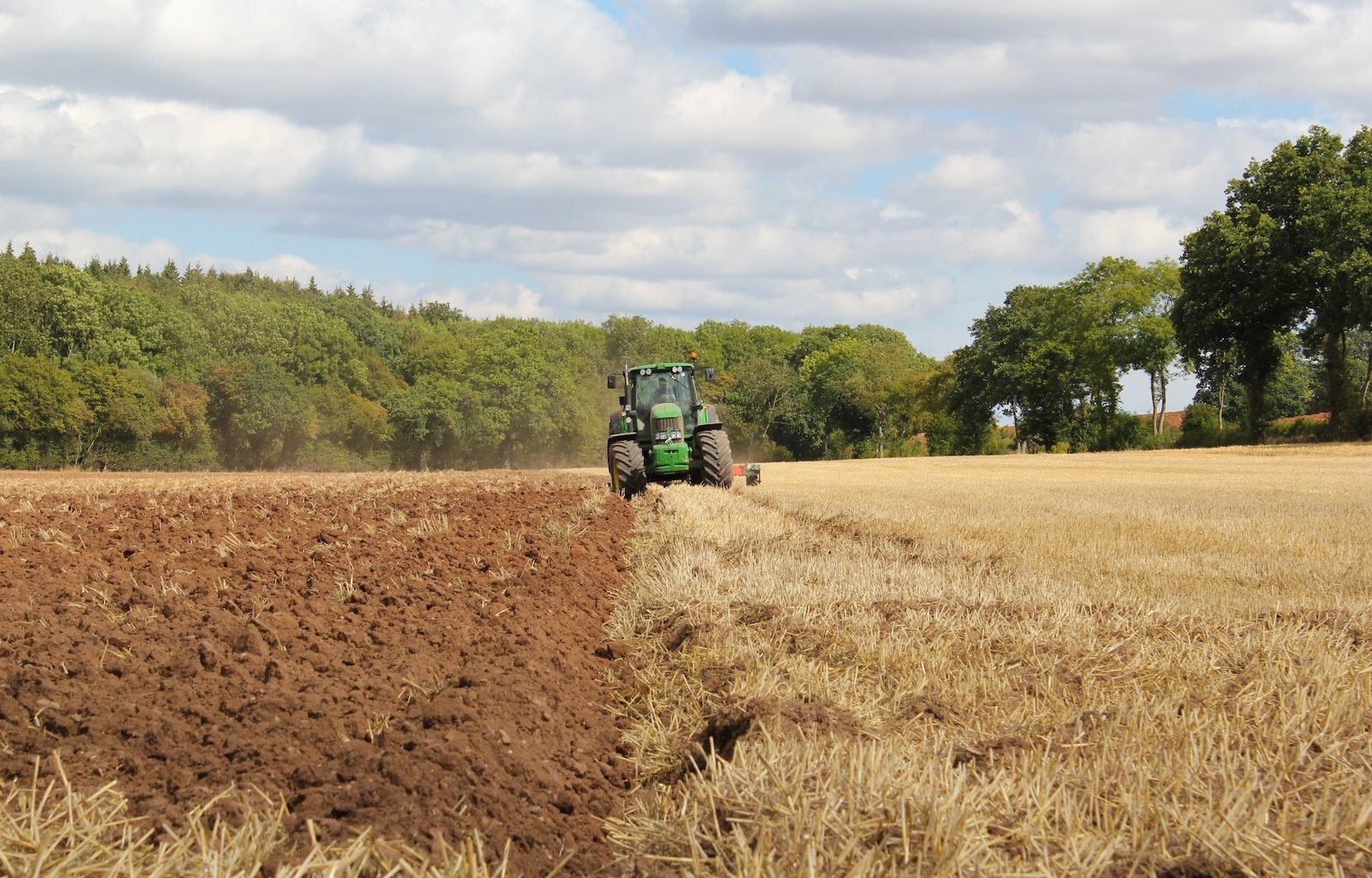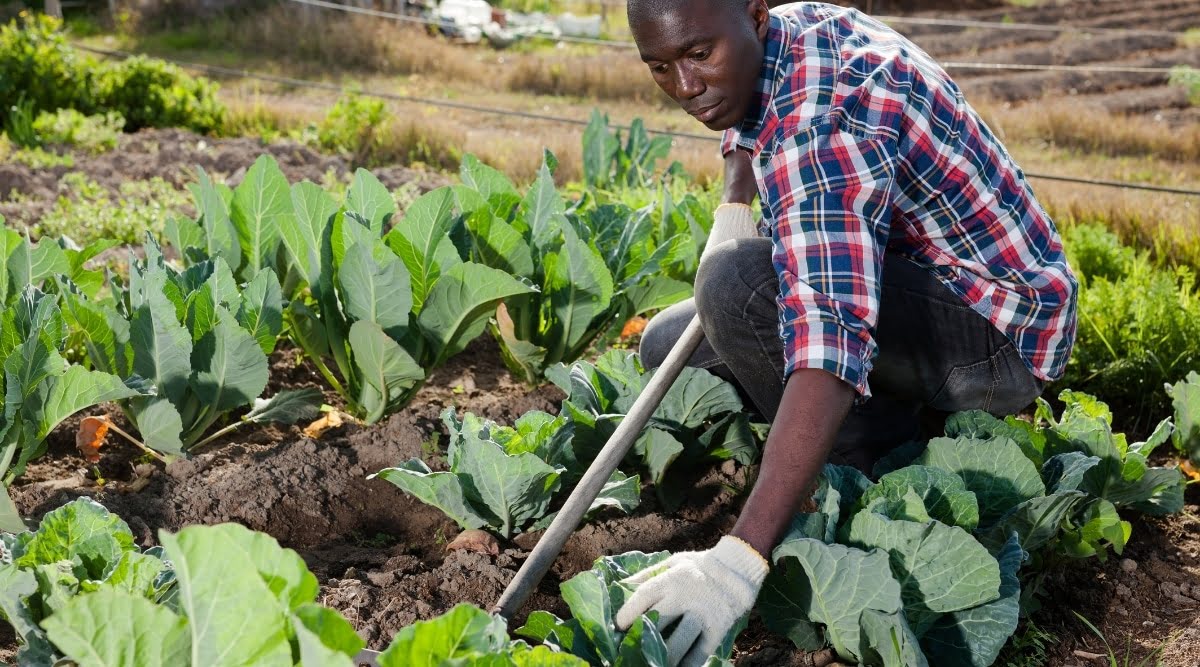Home>Gardening News and Trends>Latest News>What Is The Horticulture Industry


Latest News
What Is The Horticulture Industry
Modified: January 22, 2024
Discover the latest news and trends in the horticulture industry. Stay up-to-date with advancements, innovations, and insights impacting the world of horticulture.
(Many of the links in this article redirect to a specific reviewed product. Your purchase of these products through affiliate links helps to generate commission for Chicagolandgardening.com, at no extra cost. Learn more)
Table of Contents
Introduction
When it comes to the beauty and sustainability of our natural environment, the horticulture industry plays a crucial role. Horticulture involves the cultivation and management of plants, both for aesthetic purposes and for practical applications such as food production and medicinal uses. From vibrant flower gardens to sustainable urban landscapes, horticulture shapes the world around us in ways that are both visually stunning and environmentally beneficial.
The horticulture industry encompasses a wide range of activities, including gardening, landscaping, nursery operations, and floral design. It combines artistry with a deep understanding of plant science, as horticulturists work with various plant species to create visually appealing and sustainable landscapes.
Furthermore, the horticulture industry is not just limited to individual hobbyists or small-scale operations. It is a significant sector of the economy, encompassing commercial growers, retailers, landscape architecture firms, and research institutions. The industry contributes to job creation, revenue generation, and the overall well-being of communities worldwide.
As society becomes more conscious of the need for environmental sustainability and the connection between nature and human well-being, the importance of the horticulture industry continues to grow. From improving air quality to providing green spaces for relaxation and recreation, horticulture plays a vital role in enhancing our quality of life.
In this article, we will explore the definition of the horticulture industry, its importance, the different types of horticulture activities, the key players in the industry, the challenges faced, and the opportunities that lie ahead. By understanding the significance and potential of the horticulture industry, we can appreciate the impact it has on our daily lives and the world around us.
Definition of the Horticulture Industry
The horticulture industry can be broadly defined as the science, art, and business of cultivating and nurturing plants for various purposes. It encompasses the production, marketing, and distribution of plants, flowers, and related products. Horticulture goes beyond traditional agriculture, focusing not only on food production but also on the aesthetic and recreational aspects of plants.
Horticulturists utilize their knowledge of plant biology, cultivation techniques, and landscape design principles to create visually stunning and sustainable environments. They employ practices such as plant propagation, irrigation, pest control, and soil management to ensure the health and vitality of plants.
Within the horticulture industry, there are various sectors and subfields. These include:
- Floriculture: This branch focuses on the cultivation and marketing of flowers and ornamental plants. Floriculture encompasses activities such as flower breeding, production of cut flowers, potted plants, and floral arrangements for decorative purposes.
- Olericulture: Olericulture refers to the growing and management of vegetables. It includes the cultivation, breeding, harvesting, and distribution of a wide range of edible plants, including leafy greens, root vegetables, and culinary herbs.
- Pomology: Pomology deals with the science and production of fruit-bearing trees and plants. It involves the study of fruit tree growth, fruit development, and methods for maximizing fruit quality and yield.
- Arboriculture: Arboriculture focuses on the care and management of trees, including planting, pruning, and tree maintenance. Arborists ensure the health, safety, and aesthetic appeal of trees in various settings, such as parks, urban landscapes, and private properties.
- Landscape Horticulture: This field combines elements of garden design, plant selection, and landscape construction to create aesthetically pleasing and functional outdoor spaces. Landscape horticulturists work on projects ranging from residential gardens to public parks and commercial landscapes.
These are just a few examples of the diverse areas within the horticulture industry, each with its own unique set of skills, knowledge, and techniques.
Overall, the horticulture industry plays a vital role in enhancing our environment, economy, and quality of life. It caters to our aesthetic preferences, provides nutritious food, contributes to local economies, and promotes environmental sustainability. Understanding the diverse nature of the horticulture industry allows us to appreciate its significance and the opportunities it offers for individuals, communities, and businesses.
Importance of the Horticulture Industry
The horticulture industry plays a crucial role in our society, providing numerous benefits that contribute to our well-being, environment, and economy. Here are some key reasons why the horticulture industry is important:
1. Environmental Benefits: Horticulture helps to create and maintain green spaces, which have a positive impact on the environment. Plants contribute to the reduction of greenhouse gases by absorbing carbon dioxide and releasing oxygen. They help to improve air quality by filtering pollutants and releasing fresh oxygen into the atmosphere. Additionally, well-designed landscapes improve water quality by reducing stormwater runoff and promoting natural filtration.
2. Aesthetic Appeal: The horticulture industry enhances the beauty of our surroundings. From public parks and gardens to urban landscapes and private gardens, plants and flowers add color, texture, and visual interest to our lives. The artistry and design principles employed by horticulturists create aesthetically pleasing outdoor spaces that uplift our spirits and improve our overall well-being.
3. Food Production: Horticulture plays a significant role in food production. Through the cultivation of fruits, vegetables, and herbs, it provides a sustainable and reliable supply of nutritious food. The horticultural practices ensure quality, flavor, and safety, contributing to the health and well-being of individuals and communities.
4. Economic Impact: The horticulture industry has a considerable economic impact, generating employment opportunities and contributing to local economies. From commercial growers and nurseries to landscaping businesses and floral shops, the industry supports a wide range of jobs and business ventures. Additionally, horticultural tourism, such as visits to botanical gardens and flower festivals, attracts tourists and boosts local economies.
5. Therapeutic Effects: Engagement with plants and nature has been shown to have therapeutic effects. Horticulture therapy, also known as garden therapy, is utilized to improve physical, mental, and emotional well-being. It has been found to reduce stress, alleviate symptoms of depression and anxiety, and enhance cognitive function. The horticulture industry plays a vital role in providing opportunities for individuals to connect with nature and experience its healing benefits.
These are just a few reasons highlighting the importance of the horticulture industry. From environmental sustainability to economic growth and personal well-being, the industry influences and enriches various aspects of our lives. By recognizing and supporting the horticulture industry, we can foster a healthier and more beautiful world for generations to come.
Types of Horticulture Activities
The horticulture industry encompasses a wide range of activities that involve the cultivation and management of plants for various purposes. Here are some of the main types of horticulture activities:
- Gardening: Gardening is the most common and accessible horticulture activity. It involves the cultivation and care of plants in domestic or community settings. From growing flowers, vegetables, and herbs in backyard gardens to tending to indoor plants, gardening provides a fulfilling and hands-on experience for individuals of all ages.
- Landscaping: Landscaping is the practice of designing, creating, and maintaining outdoor spaces. It involves the selection and arrangement of plants, hardscape elements, and other features to achieve functional and aesthetically pleasing landscapes. Landscapers work on a variety of projects, including residential gardens, parks, commercial developments, and public spaces.
- Nursery Operations: Nursery operations focus on the propagation and cultivation of plants primarily for sale. Nurseries provide a wide variety of plants, including ornamental flowers, trees, shrubs, and fruit-bearing plants. They play a vital role in supplying the horticulture industry with healthy and well-established plants for various applications.
- Floral Design: Floral design is an artistic horticulture activity that involves arranging and designing flowers and foliage into visually pleasing displays. Floral designers create arrangements for events, weddings, and other occasions, as well as for decorative purposes in homes and businesses. They have a deep understanding of floral aesthetics and use their creativity to create stunning compositions.
- Arboriculture: Arboriculture focuses on the care, management, and study of individual trees. It includes activities such as tree pruning, planting, pest and disease control, and tree risk assessment. Arborists utilize their expertise to ensure the health and safety of trees in urban and natural environments.
- Olericulture: Olericulture refers to the cultivation and management of vegetable crops. Olericulturists work on growing a wide range of vegetables, including leafy greens, root vegetables, beans, and peppers. They employ sustainable farming practices to ensure optimal yield, quality, and food safety.
- Pomology: Pomology is the branch of horticulture that focuses on fruit production. Pomologists specialize in the cultivation and management of fruit-bearing trees and plants. They apply techniques such as grafting, pruning, and irrigation to optimize fruit quality and yield.
These are just a few examples of the diverse horticulture activities that individuals and businesses engage in. Each of these activities requires a unique set of skills, knowledge, and techniques. The availability and accessibility of these various horticulture activities contribute to the overall growth and sustainability of the industry.
Key Players in the Horticulture Industry
The horticulture industry consists of various key players who contribute to its growth, development, and success. These players work in different sectors and perform different roles within the industry. Here are some of the main key players in the horticulture industry:
- Commercial Growers: Commercial growers are an integral part of the horticulture industry. These are businesses that specialize in the cultivation of plants on a large scale. They grow a wide range of plants, including flowers, vegetables, fruit trees, and ornamental plants. Commercial growers employ advanced techniques and technologies to ensure optimal plant growth, yield, and quality.
- Nurseries: Nurseries play a vital role in the horticulture industry by supplying plants to various customers. They focus on the propagation and cultivation of plants, ensuring that they are healthy and well-established. Nurseries provide a diverse range of plants, including bedding plants, trees, shrubs, and perennials, catering to the needs of gardeners, landscapers, and homeowners.
- Landscape Architects: Landscape architects are professionals who design and plan outdoor spaces. They work closely with clients to create functional and visually appealing landscapes. Landscape architects are responsible for selecting appropriate plants, hardscape elements, and water features, and for ensuring that the landscape design harmonizes with the surrounding environment.
- Florists: Florists are individuals or businesses that specialize in creating and arranging floral displays. They work with a wide variety of flowers and foliage to create bouquets, centerpieces, and other floral arrangements for various occasions. Florists often collaborate with event planners, wedding organizers, and individuals who seek beautiful and customized floral arrangements.
- Horticulture Researchers and Educators: Researchers and educators in the field of horticulture play a crucial role in advancing knowledge and innovation in the industry. They conduct scientific studies, develop new cultivation techniques, and educate aspiring horticulturists. Through their work, researchers and educators help to improve plant health, productivity, and sustainability.
- Horticulture Suppliers: Suppliers in the horticulture industry provide the necessary tools, equipment, and materials for horticultural activities. These include suppliers of seeds, fertilizers, pesticides, gardening tools, irrigation systems, and greenhouse structures. Horticulture suppliers ensure that growers, landscapers, and gardeners have access to high-quality and reliable products.
These are just a few examples of the key players in the horticulture industry. The industry thrives on collaboration and cooperation among these players, each contributing their expertise and resources to support the growth and success of horticultural activities. By working together, these key players ensure the availability of beautiful and sustainable landscapes, healthy plants, and enjoyable horticultural experiences for individuals and communities.
Challenges Faced by the Horticulture Industry
The horticulture industry, like any other industry, faces numerous challenges that can impact its growth, sustainability, and overall success. Understanding these challenges is crucial for finding solutions and ensuring the industry’s continued progress. Here are some of the key challenges faced by the horticulture industry:
- Climate Change: Climate change poses a significant challenge to the horticulture industry. Rising temperatures, extreme weather events, and changing rainfall patterns can disrupt growing seasons, increase pest and disease pressures, and affect crop yield and quality. Horticulturists must adapt to these changing conditions and implement strategies to mitigate the impacts of climate change.
- Pest and Disease Management: Plants in the horticulture industry are susceptible to various pests and diseases, which can cause significant damage and economic losses. Ensuring effective pest and disease management is critical to maintaining plant health and preventing the spread of harmful organisms. This often requires implementing integrated pest management (IPM) strategies that focus on biological, cultural, and chemical control methods.
- Labor Availability: Finding and retaining skilled labor is a challenge in the horticulture industry. The physical demands and seasonal nature of horticultural work, coupled with a lack of awareness and interest in the field, make it difficult to attract a skilled workforce. This can lead to labor shortages and an increased reliance on automation and technology to compensate for the shortage of human resources.
- Market Demand and Competition: Meeting the constantly evolving market demands and staying competitive can be challenging for horticulture businesses. Changes in consumer preferences, growing interest in organic and sustainable products, and the rise of online shopping platforms have made it necessary for horticulturists to adapt and differentiate their offerings to remain relevant in the market.
- Resource Management: Effective management of resources, including water and energy, is essential in the horticulture industry. Water scarcity, increasing energy costs, and environmental concerns necessitate sustainable practices and efficient resource utilization. Adopting water conservation measures, implementing energy-efficient technologies, and optimizing resource use are crucial for minimizing the industry’s ecological footprint.
- Regulations and Compliance: Horticulture businesses must navigate a complex web of regulations and compliance requirements, including plant health regulations, zoning laws, and environmental regulations. Staying updated with these regulations and ensuring compliance can be challenging, especially for smaller businesses with limited resources. Failure to comply with regulations can result in legal issues and reputational damage.
Addressing these challenges requires collaboration among stakeholders, including horticulturists, researchers, policymakers, and industry associations. By staying informed, embracing innovation, and adopting sustainable practices, the industry can overcome these challenges and pave the way for a resilient and thriving horticulture sector.
Opportunities in the Horticulture Industry
The horticulture industry offers numerous opportunities for growth, innovation, and sustainability. As society becomes increasingly aware of the benefits of plants and nature, the demand for horticultural products and services continues to rise. Here are some key opportunities in the horticulture industry:
- Green Infrastructure Development: The growing emphasis on sustainable and livable cities presents opportunities for horticulture professionals to contribute to green infrastructure development. This includes the creation of urban parks, green roofs, vertical gardens, and other green spaces that enhance environmental quality, reduce urban heat islands, and improve the overall well-being of urban dwellers.
- Organic and Sustainable Horticulture: With increasing consumer demand for organic and sustainably grown produce, there is a significant opportunity for horticulturists to adopt and promote environmentally friendly practices. By implementing organic growing methods, reducing reliance on synthetic pesticides, and minimizing resource use, horticulturists can cater to the growing market of eco-conscious consumers.
- Technology Integration: The integration of technology in horticulture offers numerous advantages, including improved efficiency, precision, and productivity. Technologies such as automated irrigation systems, remote monitoring, and precision agriculture tools allow for better resource management and enhanced crop health. Embracing these technological advancements can lead to increased profitability and competitiveness in the industry.
- Sustainable Landscape Design: As the importance of sustainable landscapes becomes more evident, landscape architects and designers have the opportunity to create environmentally friendly and resilient outdoor spaces. Incorporating native plants, using water-conserving techniques, and employing low-impact design principles can lead to landscapes that are not only visually appealing but also sustainable and ecologically beneficial.
- Specialty Crops and Niche Markets: The demand for unique and specialty horticultural products continues to grow. Whether it’s growing exotic flowers, rare plant varieties, or heirloom vegetables, there are opportunities to cater to niche markets. By identifying and capitalizing on these opportunities, horticulturists can differentiate themselves and potentially command higher prices for their specialized offerings.
- Community Engagement and Education: Horticulture provides opportunities for community engagement and education. By organizing workshops, community gardens, and educational programs, horticulturists can promote sustainable practices, educate the public about the benefits of plants, and foster a love for gardening and nature. Engaging with the community not only strengthens relationships but also creates potential customers and advocates for the industry.
These opportunities, coupled with advancements in technology, changing consumer preferences, and increasing awareness of environmental sustainability, make the horticulture industry an exciting and promising field to be a part of. By embracing these opportunities, horticulturists can contribute to a greener and more sustainable future while reaping the rewards of a thriving and resilient industry.
Conclusion
The horticulture industry plays a crucial role in enhancing our environment, economy, and quality of life. Its diverse range of activities, including gardening, landscaping, nursery operations, and floral design, creates visually stunning landscapes, provides nutritious food, and contributes to local economies. The industry faces challenges such as climate change, pest management, labor availability, and market competition. However, it also presents significant opportunities for growth and innovation.
With the increasing focus on environmental sustainability, there is a demand for green infrastructure development, organic and sustainable horticulture practices, and technology integration. Moreover, the industry offers opportunities for specialization in niche markets, such as exotic plants and specialty crops. The promotion of sustainable landscape design and community engagement and education are also important avenues for growth.
As the horticulture industry continues to evolve, collaboration among stakeholders is crucial. Nurseries, growers, landscapers, researchers, policymakers, and consumers all play a part in shaping and advancing the industry. By embracing innovation, adopting sustainable practices, and staying informed about emerging trends, the horticulture industry can flourish and make significant contributions to a greener and more beautiful world.
In conclusion, the horticulture industry is not only an essential economic sector but also a source of inspiration, beauty, and sustainability. By recognizing its importance, addressing its challenges, and seizing its opportunities, we can ensure the continued growth and success of this dynamic industry.






